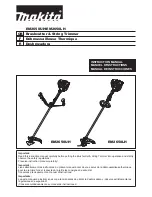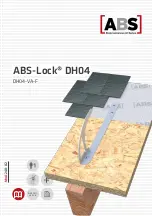
The Ping Display
165
160719
/F
Turning legends and scales off will expand the display area
containing the bars.
Parameters controlling these displays may be found in the
Parameter Window
or as menu items in a popup menu.
→
Please refer to page 169 for the Common display controls, and page 172
for the popup parameters available for this display.
Waterfall
The depth profiles from a number of pings as a function of
acrosstrack horizontal distance are displayed with a small vertical
offset between each profile. This gives a crude 3D representation
of the most recently measured bottom area.
The colour coding applied to the profiles shows different depth
levels, not bottom detection type as in the other displays. The
deepest areas will be given a deep blue colour, shifting to lighter
blue as the depth decreases. In ranges of middle depths, different
shadings of green are used. The shallow areas are represented as
different shadings of red.
A colour map (legends) showing the colours for each depth range
may be shown along the bottom of the display.
The legends may also be toggled On/Off by selecting the
Legends
parameter
menu option in a popup menu.
As the depth will usually change with position, the colour codes
used initially may only be adequate for a limited time period.
Therefore, an automatic adjustment of the depth ranges allocated
to each colour code will take place.
Please note, that when both the Waterfall Display and the CCD
Display are running at the same time, they will synchronise the
colour coding. Since the CCD Display usually contains a bigger
history buffer, the colour coding of this display will override the
coding used by the Waterfall.
Parameters controlling these displays may be found in the
Parameter Window
or as menu items in a popup menu.
→
Please refer to page 169 for the Common display controls, and page 172
for the popup parameters available for this display.
Note
Increasing the size of this display will result in decreased
performance!
Scope display
The display can be used to investigate the the receiver echo data,
and is used mainly for test purposes.
Summary of Contents for Simrad EM 300
Page 1: ...EM 300 Multibeam echo sounder Base version Operator manual ...
Page 2: ......
Page 20: ...Kongsberg Simrad EM 300 Base version XVI 160719 F Blank page ...
Page 286: ...Kongsberg Simrad EM 300 Base version 266 160719 F Figure 96 Calibration main window ...
Page 306: ...Kongsberg Simrad EM 300 Base version 286 160719 F Help The Help option provides on line help ...
Page 321: ...Planning 301 160719 F Figure 107 Creating parallel lines ...
Page 369: ...Sound Speed Profile Editor 349 160719 F Help This opens the online help system ...
Page 405: ...Operation manual 385 160719 F Blank page ...
Page 406: ...Operation manual 386 160719 F Blank page ...
Page 408: ...Blank page ...
















































